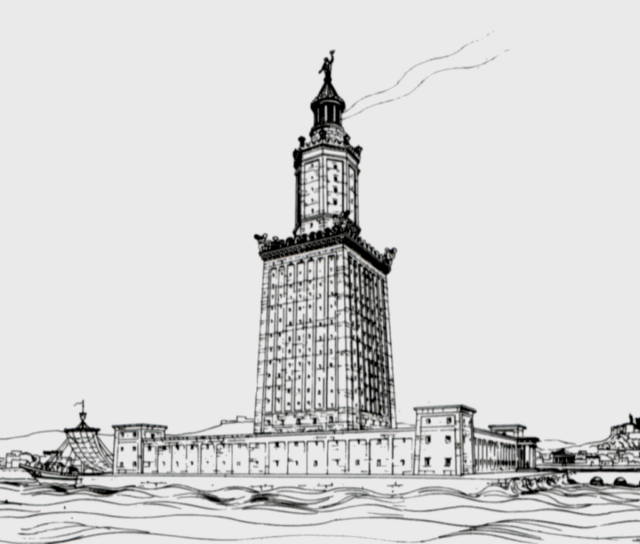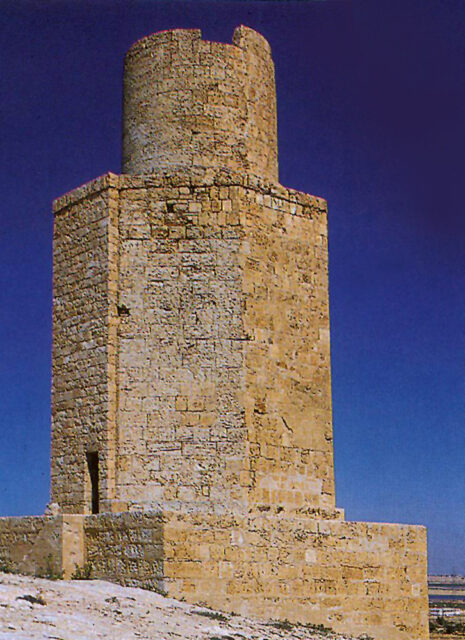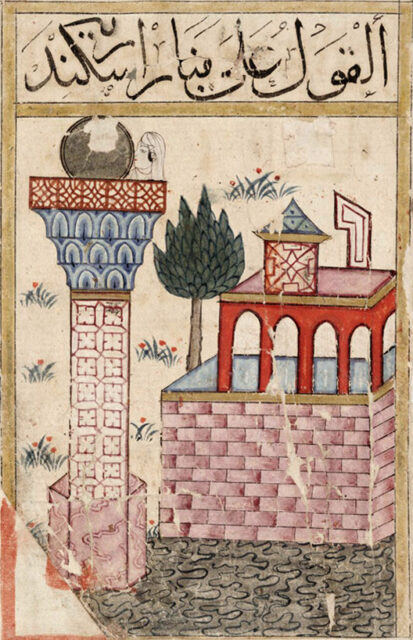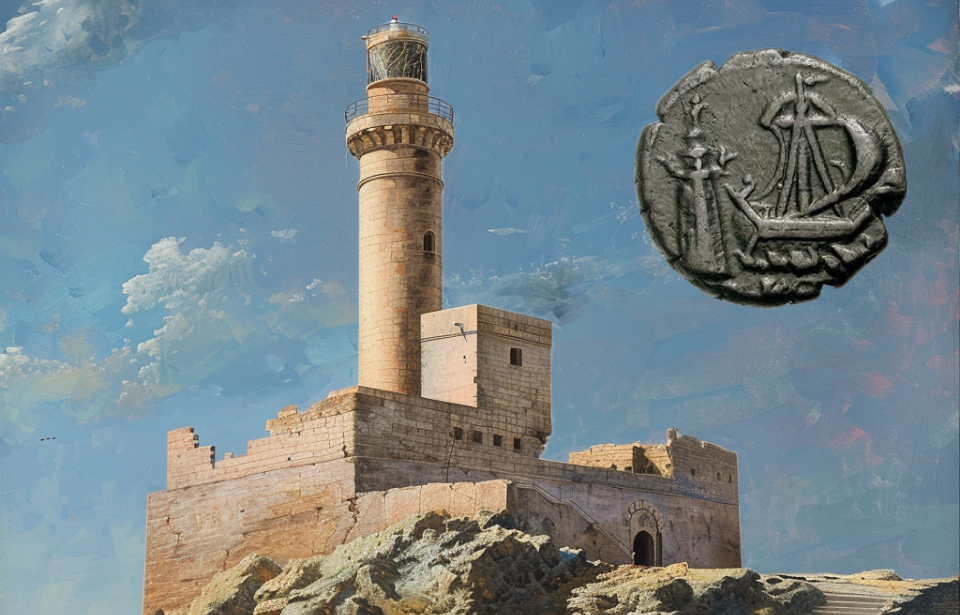Reflecting on the ancient wonders, the Lighthouse of Alexandria captivates the imagination with its historical and cultural significance. This beacon of ancient engineering not only guided mariners to the safety of Alexandria’s shores but also stood as a symbol of the city’s prosperity and intellectual might. The lighthouse’s construction, a marvel of its era, showcased the convergence of art, science, and architecture in a way that few structures of the time could. Its light, a symbol of hope and guidance, pierced through the Mediterranean mist, a testament to human ingenuity and the desire to conquer the elements. The story of the Lighthouse of Alexandria is not just one of limestone and granite but of human aspiration and the relentless pursuit of excellence.
Historical significance of the Lighthouse of Alexandria

The Lighthouse of Alexandria’s historical footprint is deeply embedded in the annals of ancient achievements, representing a beacon of innovation and enlightenment during its time. It wasn’t merely a structure for guiding vessels; it embodied the zenith of Hellenistic engineering, standing as a proud testament to the intellectual and cultural flourishing of Alexandria. The city, known for its library and as a melting pot of knowledge from around the known world, found its spirit encapsulated in the towering lighthouse. This edifice not only navigated ships through the perilous Mediterranean waters but also symbolized the beacon of knowledge that Alexandria represented, shining its light across civilizations and encouraging the pursuit of discovery and learning.
The significance of the Lighthouse of Alexandria extends into the realms of cultural and intellectual history, marking it as a symbol of the crossroads between different worlds and ideas. It was a physical representation of the confluence of Greek, Egyptian, and other ancient cultures, showcasing how diverse thoughts and innovations can come together to create something truly magnificent. As ships were drawn to its guiding light, so were scholars drawn to Alexandria’s promise of intellectual riches. The lighthouse thus stands in history not just as an architectural marvel but as a monument to the human quest for knowledge and the unification of diverse cultures towards common goals. Its story continues to inspire future generations about the heights humanity can reach when we combine our strengths and visions.
The architectural wonders of the Lighthouse of Alexandria

The architectural wonders of the Lighthouse of Alexandria go beyond its towering height, which was an awe-inspiring sight for ancient travelers and remains a point of fascination for modern scholars. Imagine a structure so imposing and majestic that it could be seen from miles away, guiding ships toward the safety of Alexandria’s shores. The lighthouse’s design was a marvel of ancient engineering, featuring a broad base that tapered elegantly into a slender top, a testament to the architectural sophistication of its creators. This iconic structure was a symbol of the technological prowess and artistic sensibility of the ancient world, crafted from gleaming white stone that shone under the sun.
Delving deeper into its architectural features, the Lighthouse of Alexandria was not only celebrated for its impressive height but also for its multi-tiered design, which demonstrated a harmonious blend of form and function. The base, with its solid square shape, provided a sturdy foundation, while the octagonal middle section and the circular top facilitated the lighthouse’s primary function as a navigational aid. The use of reflective materials to amplify light, allowing it to be seen from great distances, was a stroke of genius that underscored the lighthouse’s significance in maritime history. Its construction was a monumental achievement, embodying the spirit of innovation and the pursuit of excellence that defined the era.
The construction of Alexandria’s lighthouse

As we look closer at the origins of the Lighthouse of Alexandria, we uncover a narrative steeped in ambition and innovation. Spearheaded by Ptolemy II Philadelphus, its construction marked a period where Alexandria was not just a city but a beacon of progress and enlightenment. The project attracted the finest minds and skilled laborers from across the known world, all converging in this vibrant city to bring the pharaoh‘s visionary project to life. The process of building such a monumental structure was no small feat; it required not only advanced engineering and architectural knowledge but also a deep understanding of the sea and its perils. This collaborative effort underscored the city’s status as a hub of cultural and intellectual exchange, with the lighthouse symbolizing the zenith of Alexandria’s ambition.
The construction techniques employed in erecting the Lighthouse of Alexandria were revolutionary for their time. Utilizing massive blocks of light-colored stone, each piece was meticulously carved and fitted together, creating a structure robust enough to withstand the test of time and the harsh maritime environment. The foundation had to be solid and capable of supporting the immense weight of the lighthouse while resisting the corrosive saltwater. Innovations, possibly including early forms of hydraulic cement and intricate pulley systems, were likely used to hoist the massive stones into place, reaching a towering height of around 330 feet. The endeavor was not just a testament to the physical capabilities of the ancient builders but also to their ability to innovate, adapt, and overcome the considerable challenges posed by such a daring project. As the lighthouse rose from the shores of Pharos, it was a clear declaration of Alexandria’s prowess, a tangible manifestation of human potential and ingenuity.
The destruction of the Lighthouse of Alexandria

As the centuries passed, the Lighthouse of Alexandria, once a towering symbol of navigational prowess and architectural brilliance, faced the inevitable wear and tear that comes with time. Its fate was sealed not by human conflict or deliberate dismantling but by the relentless forces of nature. Earthquakes, particularly prevalent in the Mediterranean region, struck with merciless precision, each one a blow to the integrity of this ancient wonder. The lighthouse, which had stood as a guardian for the sailors and a jewel of the ancient world, could only withstand so much. Its decline was gradual, a testament to its initial strength and design, but the cumulative effect of these natural disasters eventually led to its downfall, erasing its physical form from the landscape it once dominated.
Despite this, the story of the Lighthouse of Alexandria did not end with its destruction. The site where it once stood, now marked by the historic Fort Qaitbay, continues to draw visitors, historians, and archaeologists fascinated by its legacy. The lighthouse’s influence stretches far beyond its original purpose, contributing to our understanding of ancient engineering and architecture. Its memory is preserved in texts, drawings, and through the remnants incorporated into the fort that now occupies its place. This enduring interest ensures that the Lighthouse of Alexandria, even in its absence, remains a beacon of human achievement and curiosity, casting light on the ingenuity of our ancestors and encouraging future generations to explore and appreciate the wonders of the ancient world.
Archaeological research and rediscovery of the lighthouse

The quest to uncover more about the Lighthouse of Alexandria has captivated historians and archaeologists for years. Recent archaeological endeavors have brought to light fascinating insights into its original grandeur and the advanced construction techniques of the era. Diving expeditions off the coast of Alexandria have unearthed submerged blocks believed to have been part of the lighthouse’s majestic structure. These findings suggest the scale of destruction caused by natural disasters was immense, giving us a glimpse into the challenges faced by the ancient builders and the resilience of their creations. Through these underwater explorations, pieces of the puzzle that is the Lighthouse of Alexandria are slowly being pieced together, offering a richer understanding of its historical and architectural significance.
Read more: Egypt Is Covering One of Its Ancient Pyramids in Granite and It’s Causing Serious Outrage
Moreover, the rediscovery of the Lighthouse of Alexandria’s remnants has sparked a renewed interest in preserving its legacy. Efforts to digitally reconstruct the lighthouse, based on the archaeological evidence gathered, have provided historians and the public alike with a virtual glimpse into its past splendor. This blend of ancient history and modern technology allows us to step back in time and imagine the lighthouse as it once was – a beacon of light and a symbol of human achievement. As more discoveries are made, the story of the Lighthouse of Alexandria continues to evolve, reminding us of the enduring fascination with the ancient world and the mysteries it still holds.
